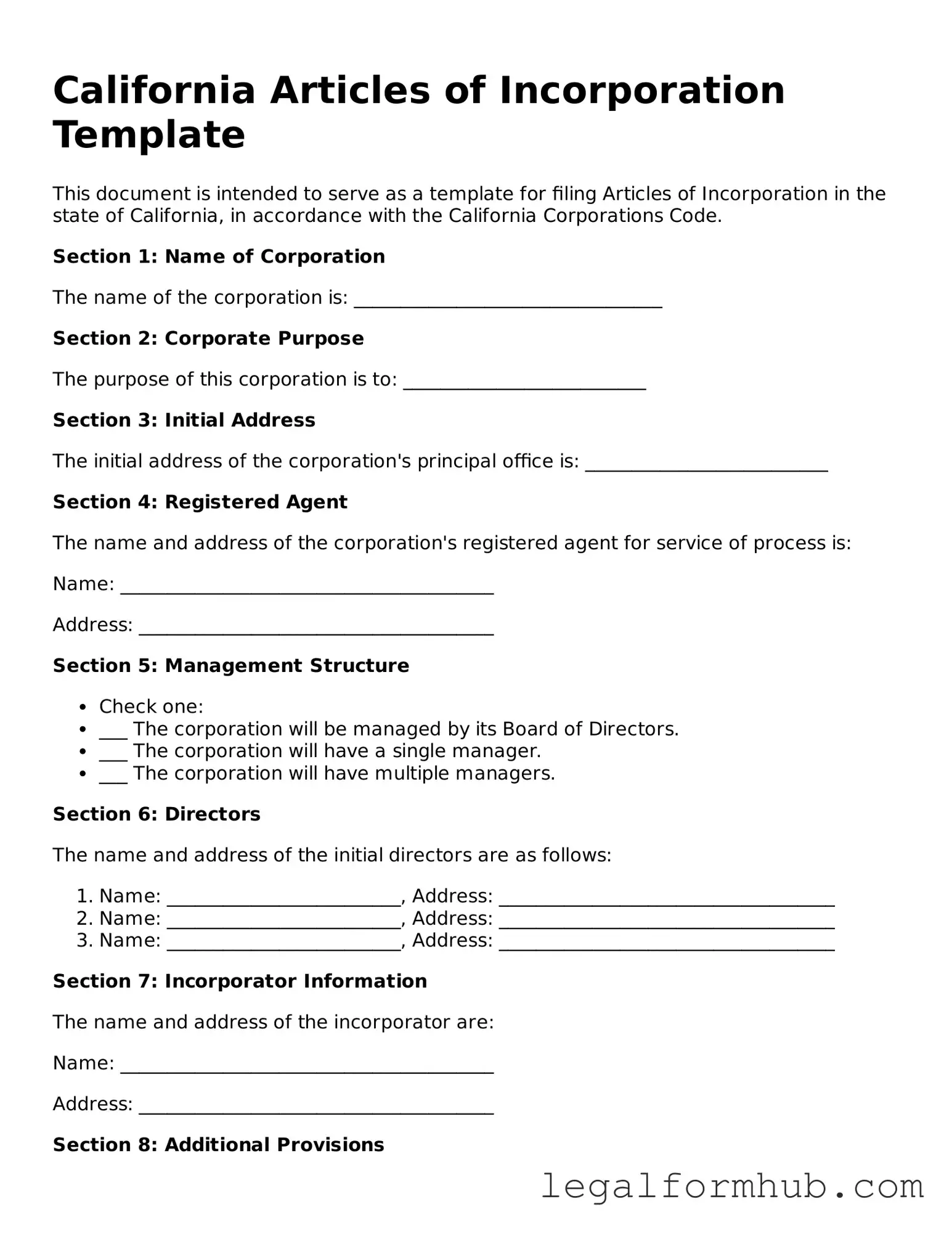The California Articles of Incorporation form shares similarities with the Certificate of Incorporation, commonly used in other states. Both documents serve as foundational legal papers that establish a corporation's existence. They outline essential details such as the corporation's name, purpose, and the address of its registered office. This document is filed with the Secretary of State and provides the legal framework necessary for the corporation to operate within its jurisdiction.
Another document closely related to the Articles of Incorporation is the Bylaws. While the Articles of Incorporation lay out the basic structure of the corporation, the Bylaws provide the internal rules and guidelines for its governance. They cover aspects such as the roles of directors and officers, meeting procedures, and voting rights. Together, these documents create a comprehensive governance framework for the corporation.
The Certificate of Formation is another document that serves a similar purpose, particularly in limited liability companies (LLCs). Like the Articles of Incorporation, the Certificate of Formation is filed with the state to legally establish the entity. It includes critical information such as the LLC's name, address, and the name of its registered agent. Both documents are essential for formalizing the business structure and protecting the owners from personal liability.
The Statement of Information is also akin to the Articles of Incorporation, but it serves a different function. This document is typically filed after incorporation and provides updated information about the corporation, including its officers, directors, and business address. While the Articles of Incorporation establish the corporation, the Statement of Information ensures that the state has current records, which is crucial for compliance and transparency.
The Operating Agreement is similar to the Bylaws but is specific to LLCs. This document outlines the management structure and operational procedures of the LLC. It details the rights and responsibilities of members, profit distribution, and decision-making processes. Like the Articles of Incorporation, the Operating Agreement is vital for establishing the entity's governance and protecting the interests of its members.
The Partnership Agreement, while intended for partnerships rather than corporations, shares the foundational purpose of outlining the structure and operational guidelines of a business entity. This document details each partner's roles, profit-sharing arrangements, and dispute resolution methods. Just as the Articles of Incorporation provide clarity on corporate structure, the Partnership Agreement ensures all partners are aligned on their business operations.
If you are looking to streamline your invoicing process, the Fill PDF Forms is an excellent resource to consider. This tool allows you to create invoices with ease, ensuring that you can focus on other important aspects of your business while maintaining proper financial tracking.
The Certificate of Good Standing is another important document that complements the Articles of Incorporation. This certificate verifies that a corporation is legally registered and compliant with state regulations. It is often required when a business seeks to expand or enter contracts in other jurisdictions. While the Articles of Incorporation initiate the corporation, the Certificate of Good Standing confirms its ongoing legitimacy.
Finally, the Annual Report is similar in that it provides essential updates about the corporation to the state. This document typically includes financial statements, changes in management, and other significant developments. While the Articles of Incorporation establish the corporation's initial framework, the Annual Report ensures that the corporation maintains transparency and accountability over time.
